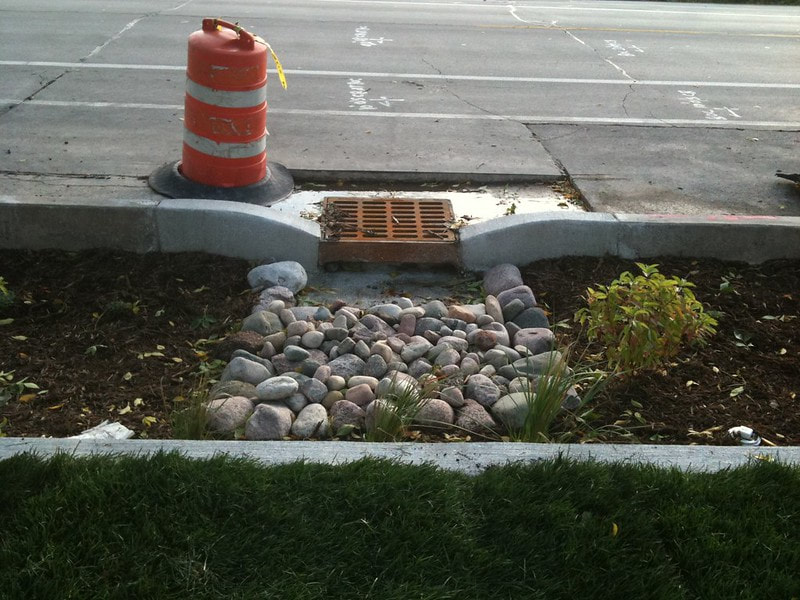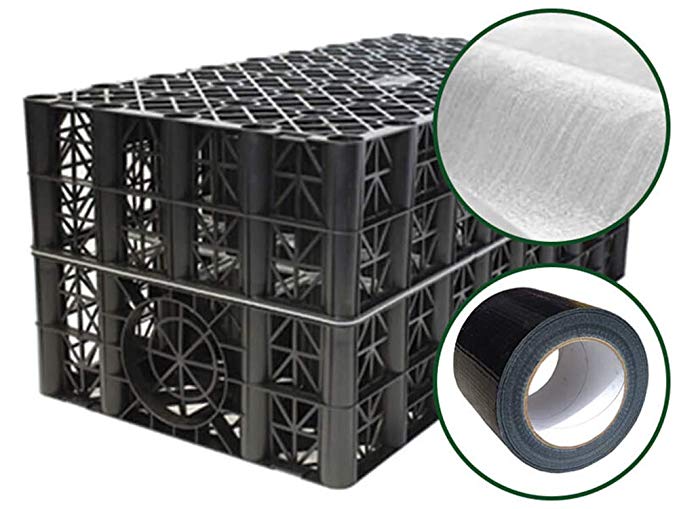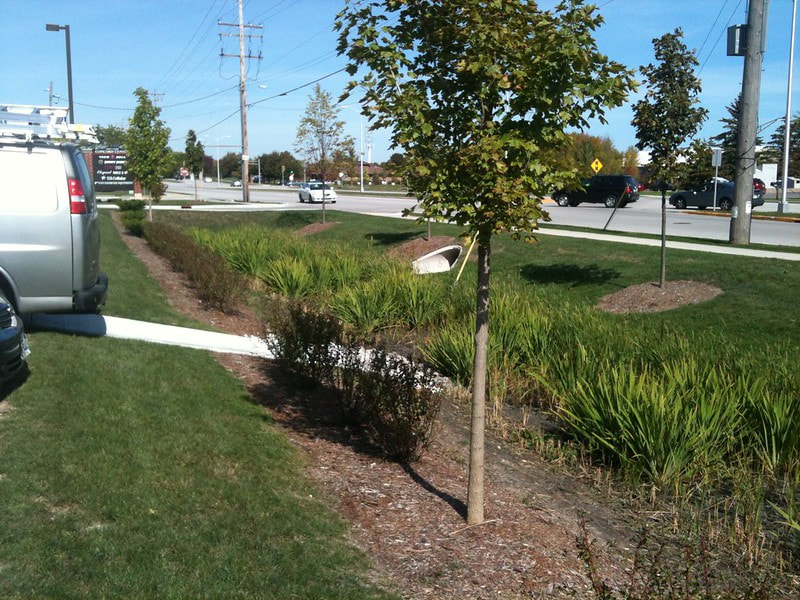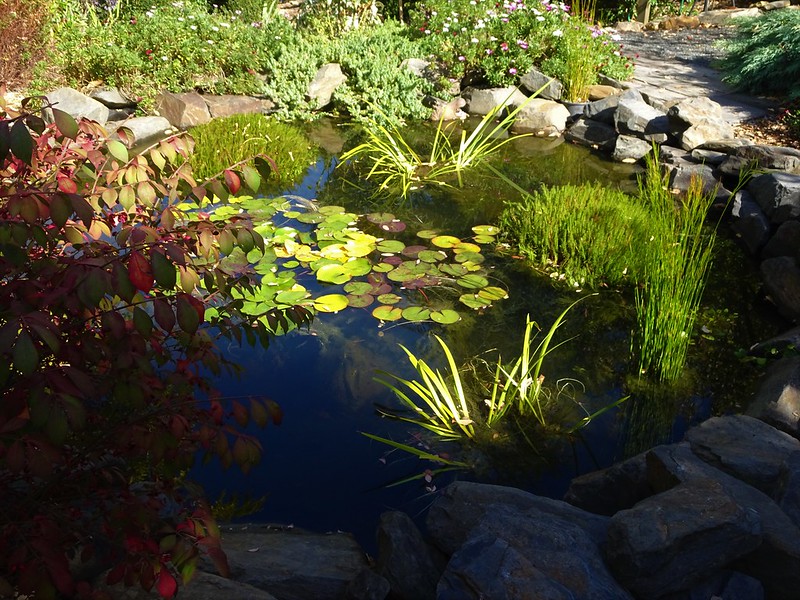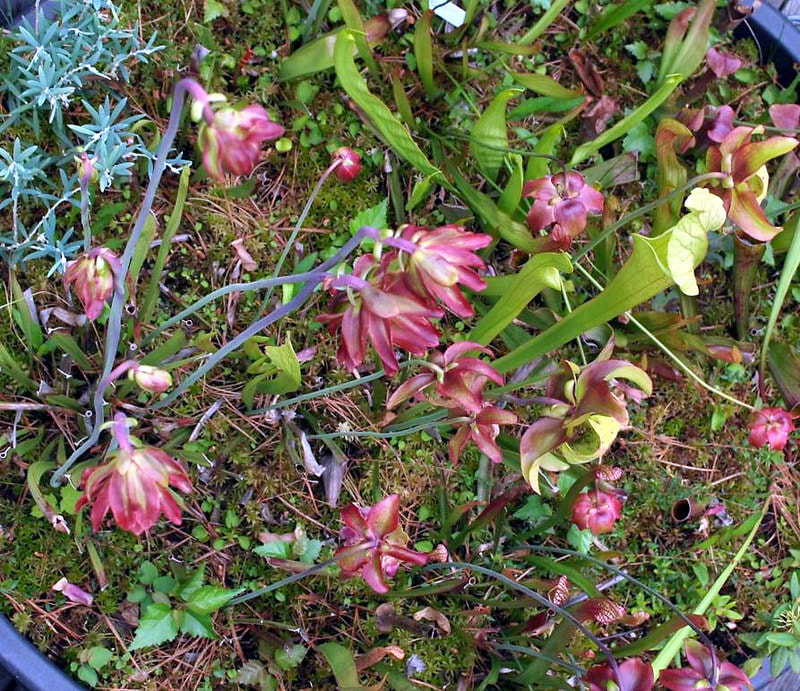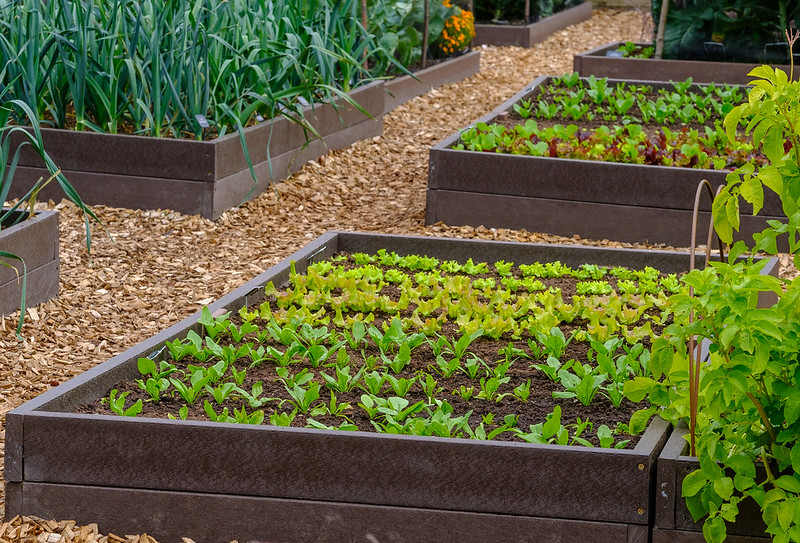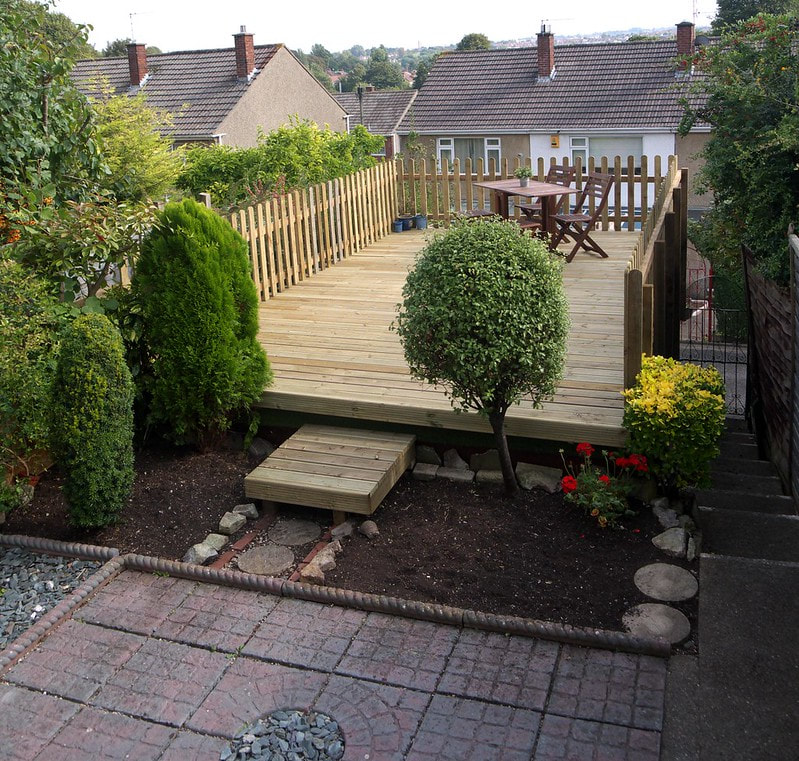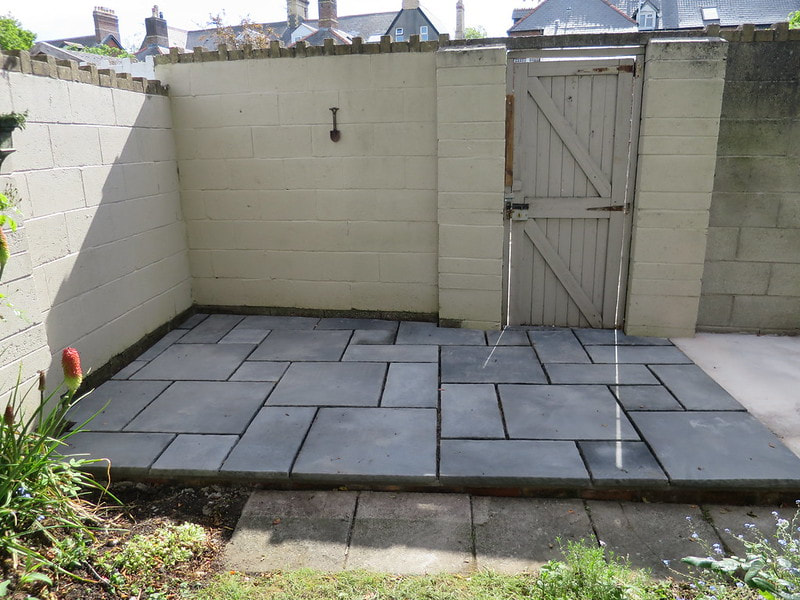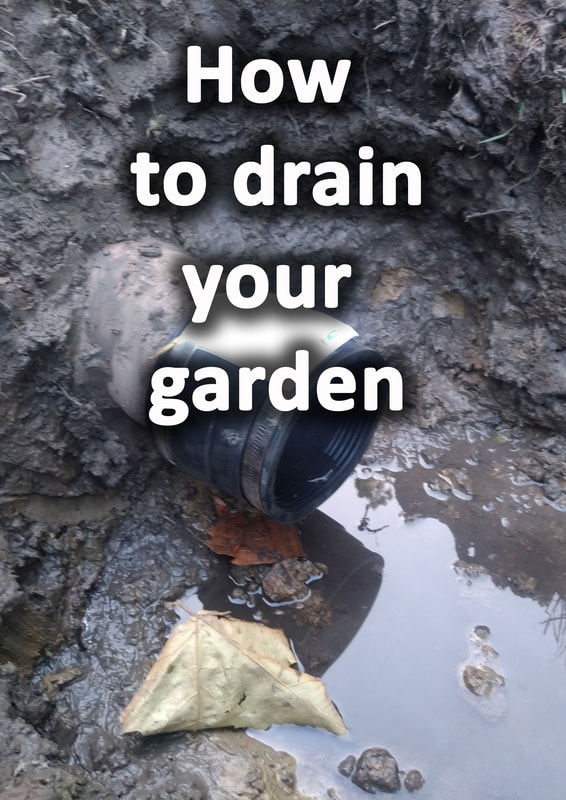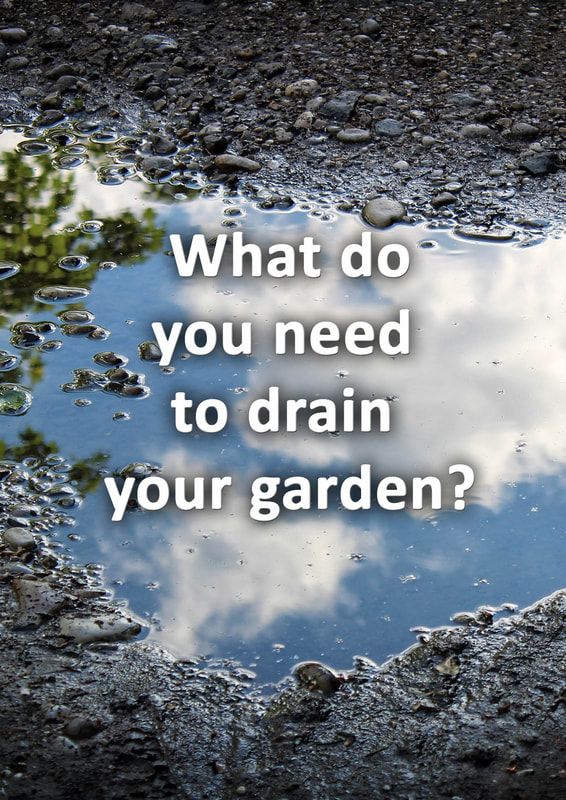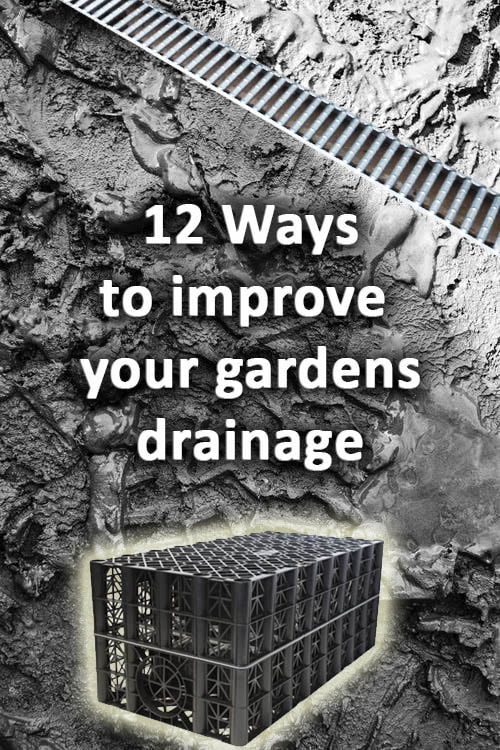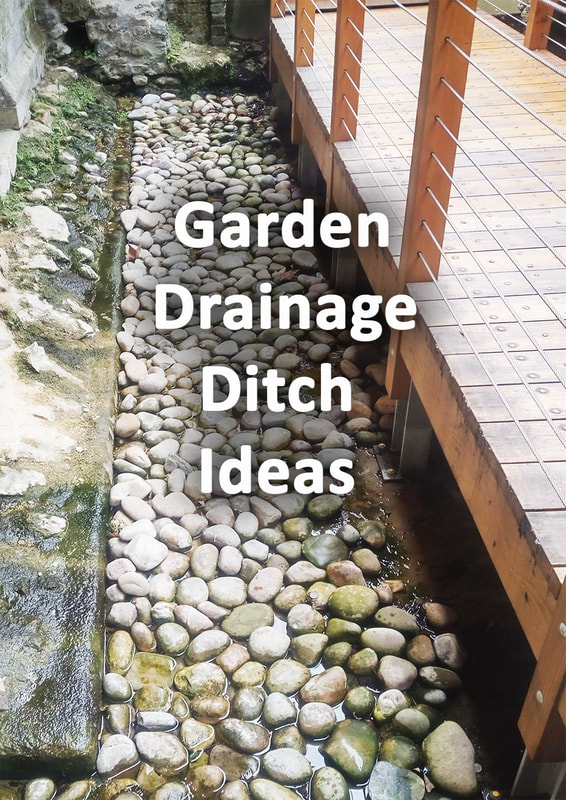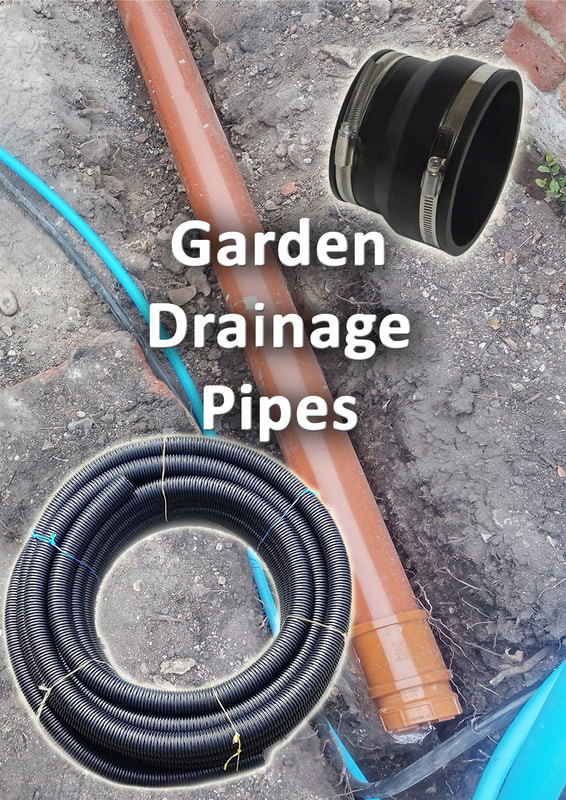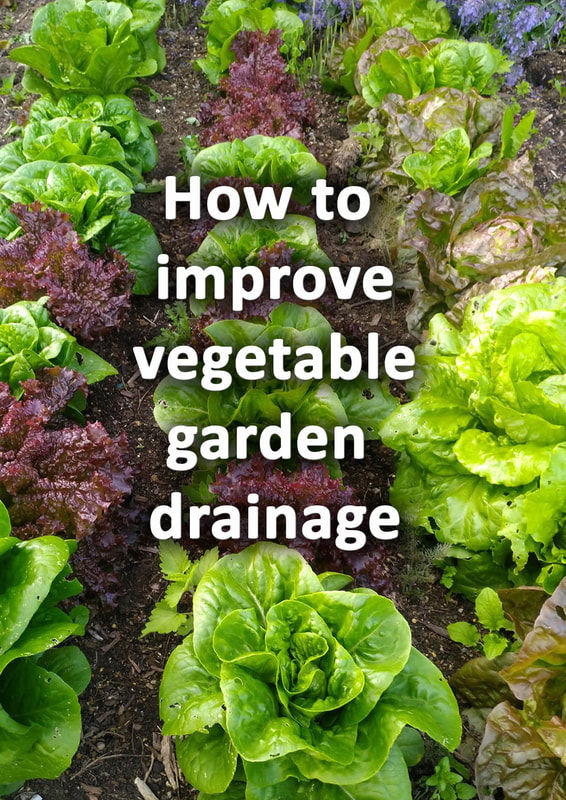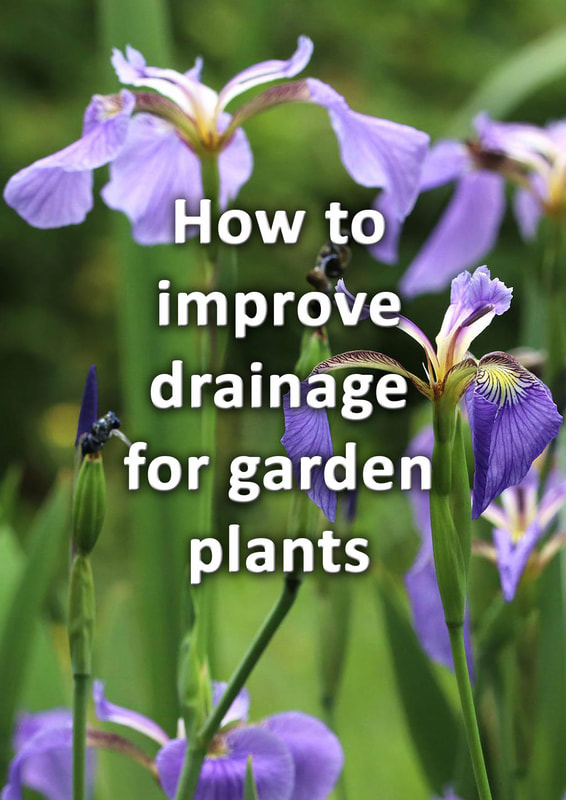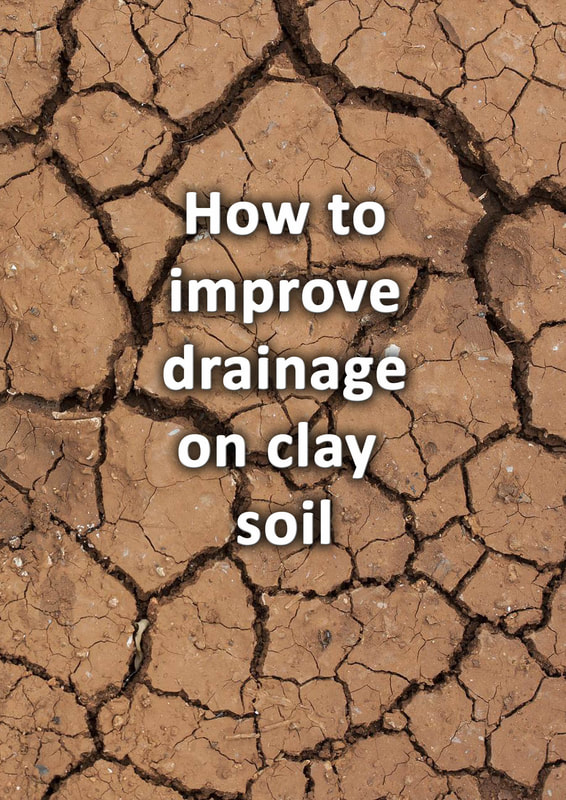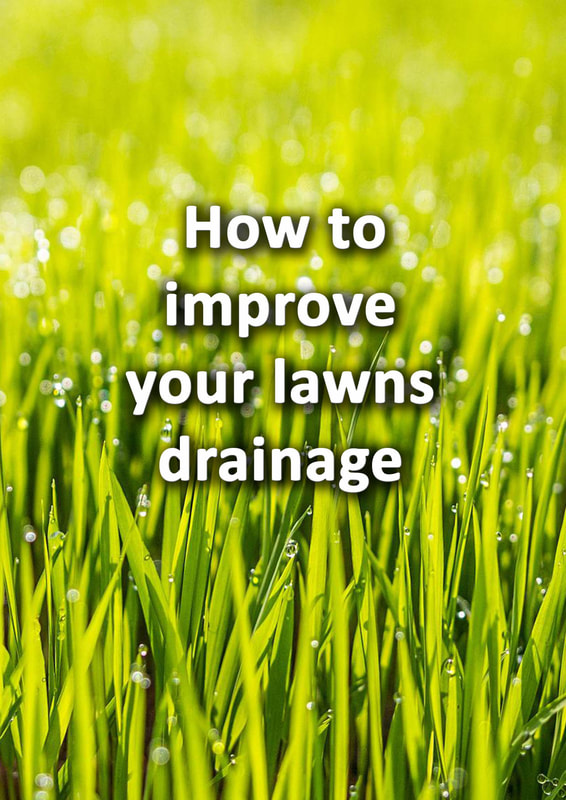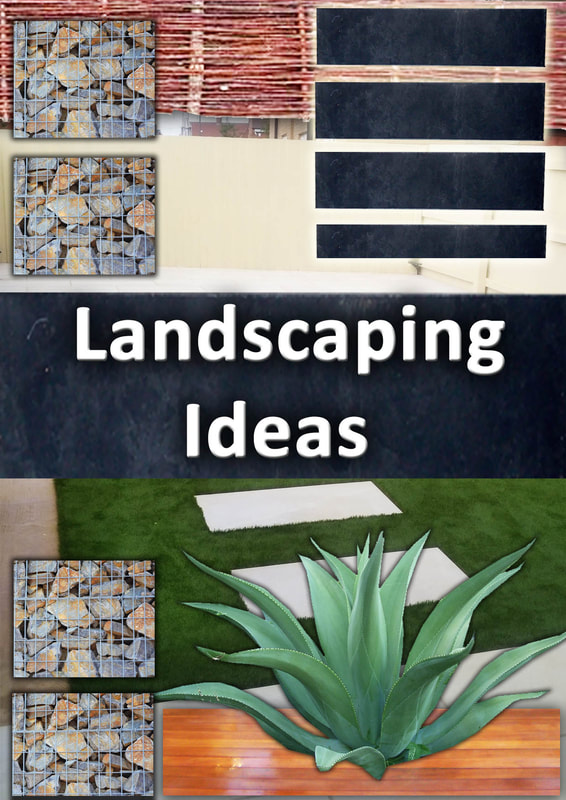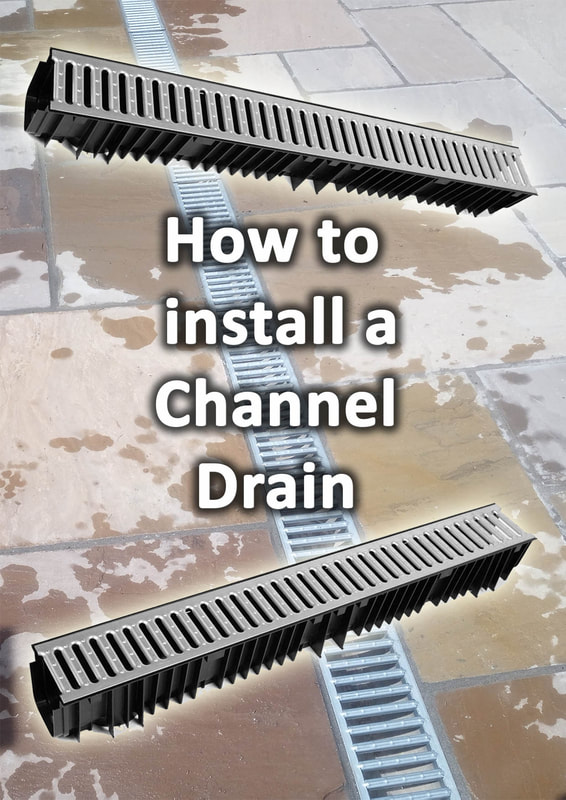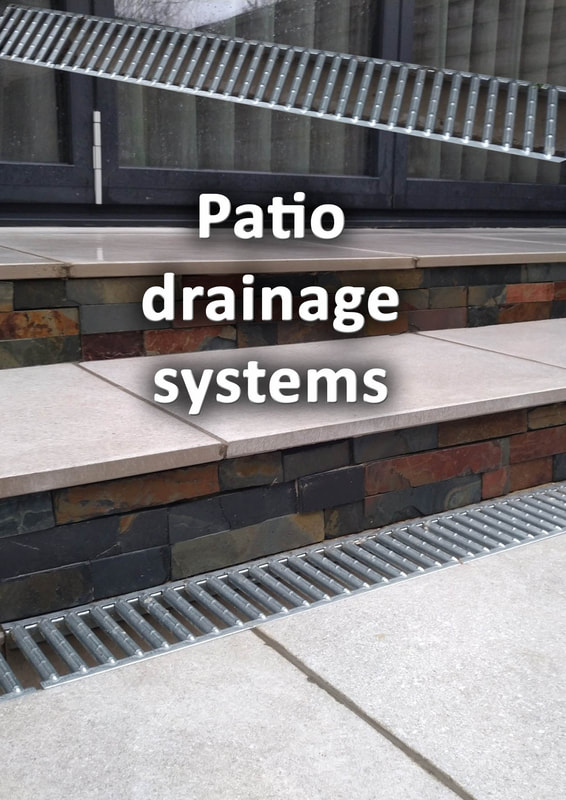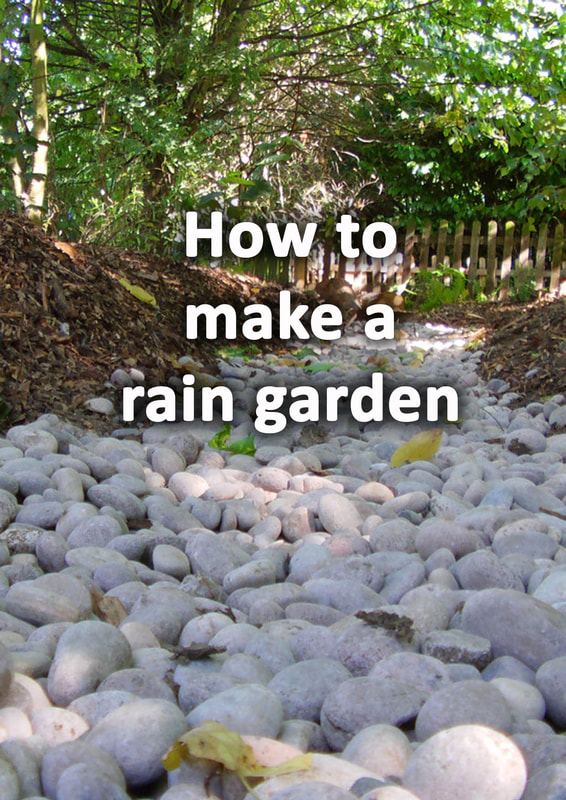|
This article contains affiliate links
Finding viable garden ideas for boggy ground can seem a little daunting. This is especially the case when a large part of your yard is submerged in winter. There are however many options for dealing with this apparent impossible scenario.
Boggy ground in most cases can be solved with drainage measures or working the natural hydrology. This can create ecological solutions which look amazing and encourage wildlife. This article gives you a step by step guide of both dealing with damp conditions and the best garden ideas for boggy ground. If there is one thing that can get in the way of your garden ambitions it is boggy garden soil. Swampy damp soil conditions are difficult to move across and can lead to specimen plants rotting in the ground. As well as not being favourable for growing most garden plants boggy ground is problematic on many levels.
Ground with high moisture content commonly becomes compact and devoid of oxygen. This can lead to a swampy stagnant mess which will smell awful and harbour pathogens. Boggy gardens are usually rutted with footprints of both people and wildlife. This makes it impossible to maintain any level of beautiful landscaping in a traditional sense.
There are two main approaches to dealing with boggy garden ground. The first is to reverse the problem with drainage solutions. This may sound simple but may or may not be possible on your plot. Successful drainage installations will depend on the hydrology, typography and regulations in your locality. The second way to deal with boggy ground is to work with the conditions. This could be to create a seasonal flooding low area of the garden or raising parts of the garden higher to improve drainage. We will discuss everything you need to know here. Drainage
One of the first desires of our clients is to attempt to reverse the problem. Understandably this is the main focus for any garden with these conditions. Boggy garden conditions are never a symptom of one particular garden but of the local area. Why not read our in depth article on how to drain your garden and solve garden drainage problems.
Over development
In many urban gardens an excessive amount of development with paved surfaces has led to increased run off. This combined with minimal soft landscaping has led to too much storm water load on soft ground.
Many local authorities do not allow you to connect landscaping drainage to the mains drainage network. This has meant an ever increasing load of water simply cannot escape our yards and gardens. Indeed boggy ground is becoming a more common sight in urban gardens. Topography
Furthermore the surrounding landscape can place your garden in a natural hollow or ‘low spot’. In this case it can be very difficult to completely irradiate the problem as the ground is acting as ‘nature intended’ It is important to recognise however that all housing development is built in areas safe of dramatic hydraulic pooling. Very low lying gardens can suffer flooding with installed soak ways simply filling up and not solving the problem.
Water table
Most areas including urban development have some measurement of the local water table or flood risk. The water table is the depth in the ground which reaches full saturation with water. Any ground level below this line will be submerged as with local ponds or wetlands.
It is important to remember that the water table will be higher in winter and lower in summer. These fluctuations will be less the closer you are to very low laying wetlands such as rivers. Knowing where your local water table sits is often the key to knowing if you will be able to solve the gardens drainage completely. Anomalous Hydrology
It is important to remember that it is almost impossible to predict and read what is going on under your ground. Many times people what an ‘absolute guarantee’ of their drainage before sending money. Quite simply there are so many reasons above the norm which may be causing local boggy conditions.
I have seen a couple of cases of micro springs which are almost non documentable due to their size. Large cities such as London have dozens of small rivers under its streets which have been paved over or incorporated into the Victorian sewer network. In gardens micro springs can be narrow damp channels of water which feed source points of streams far from your garden. When digging into these they can be a represented by a slow steady squirt of water. These can constantly feed a boggy garden continuing its drainage problems. Another form of unknowing hydrology is broken pipes. These can be leaking mains pipes or old drainage channels which have ruptured. These can be some of the most difficult drainage conditions to diagnose. Soak-aways
Most boggy garden drainage solutions can be met by simply installing a ‘drainage cage’ or soak away system. The concept is to channel excess water into a large void under the ground.
These usually resemble large plastic crates used by supermarkets for storing stock. These crates have hundreds of small holes to allow water to enter from all sides. Usually a large trench is excavated slightly larger than the cage itself. Four cages are commonly slotted together to create a 1 metre cubed soak away. The cage is wrapped in a drainage filter membrane and lowered into the trench. The surrounding void is back filled with free draining gravel such as 10mm gravel shingle. Commonly these soak ways are fed by digging linear channels around a catchment area. Perforated pipe is then laid from the channels into the soak away. Soak-aways are the most typical method of draining boggy gardens and usually provide an adequate solution. These drainage crates are available on Amazon so I have linked to them here. Bioswales
Bioswales are linear depressions in the ground which are designed to channel excess storm water and absorb it naturally.
Typically consisting of landform and soil works they can provide a way of retaining excess storm water. This can then be slowly absorbed back into the surrounding ground. Usually the bioswale will snake a trail through the landscape which has two primary design functions. Firstly the meandering course extracts any moment of any fast flowing flash flooding allowing it to flow calmly away. The second is to allow the water to flow through the roots of wetland plants which have a cleaning effect on the water. Toxic particles and dangerous metals washed from roads and urban areas can flow through these biological cleaners. These naturalistic channels can also provide great habitats for wildlife being planted with ecological plants. In a garden setting they can be used as a feature with pebble bottoms and attractive marginal plants. Bioswales can drain flood water away from other garden areas helping you to reduce boggy areas in your garden. Seasonal flooding wetlands
Most of the time gardens with boggy ground will be at their worst in winter. The most common issue with flooded gardens is not having anywhere for the water to escape. One of the best ecological solutions is to have a lower part of the garden for water to run.
By manipulating your garden levels you can create a dryer upper level and a lower wet level. The lower area will typically become seasonally flooded in winter time. This will not only result in dryer conditions at the top but will create rare seasonal flooding wetland habitats. These habitats can be designed to look rather amazing with standing deadwood, boulders and wetland plants. A wooded deck walkway can be built over the top so you can watch wildlife going about its daily life. Although seasonal flooding wetland areas are not always a common choice with some design flair they can look amazing. They can even help to drain unwanted storm water in your garden by consolidating it in one location. Wildlife ponds
It is sometimes said that the very best thing you can do to attract wildlife into your garden is a pond. But what about flooding? Well to some it may sound counter intuitive to add more water to an already wet garden. As with seasonally flooding wetland areas ponds can provide perfect places for excess water to run to.
Wildlife ponds can be created with plastic liner or in very boggy gardens be allowed to track the water table. Wildlife ponds do not have to be an overgrown muddy mess. With some good landscaping and planning they can be the perfect focal point for boggy gardens. Bog gardens
Bog gardens can be rather fascinating garden features with their very own specialist plants and associated species. Commonly to create a bog garden the very same method is used to dig a pond. Once excavated the liner is installed it is filled with soil instead of water. Water is then added to saturate the ground.
The great thing about gardens with boggy ground is they already have the perfect conditions for bog gardens. Like the examples above land form can be used to channel the gardens water into a low lying bog garden. This is a great idea for gardens with boggy ground, for more information I have linked to an informative book on the subject here. Wetland meadows
Wetland meadows are very similar to more commonly wildflower and hay meadows. The difference is wetland meadows prefer boggy ground to flourish. The various species of grasses and flowering perennials are perfect if your garden is moist all year round. Wetland meadows require cutting twice a year and can look extremely attractive when they are in full bloom. They are also fantastic wildlife habitat.
Trees
Trees may not be everyone’s idea of the perfect drainage solution especially if they only have a small garden. Trees however can help to stabilise boggy ground which is deep and rutted. Not all trees are suitable for gardens but they can help reduce the amount of moisture in the ground through transpiration. Make sure you do your research before planting large trees in your garden to make sure they are suitable. Some typical moisture loving trees are Willow, Alder, and river birch.
Shrubs
Most people want shrubs in there garden to provide colour and all year round interest. Shrubs can also use up excess water within the soil and help to stabilise soggy ground. When choosing shrubs for boggy gardens it is important to select a species that can tolerate moist conditions. If not wet conditions will mean there is a high chance your new shrubs will rot in the ground. Some good garden shrubs which can tolerate boggy conditions are: Siberian dogwood, Laurel and Viburnum.
Ground cover
In the end boggy ground can become too much of a challenge for most gardeners. For this reason it is a great idea to try to cover large boggy areas with ground cover plants. There are many types of ground cover which can tolerate boggy conditions including some ornamental grasses and ivy. If you love flowering plants there are many clump forming wetland species that love boggy conditions such as yellow flag iris. If you have boggy acidic ground you can even grow your own cranberries!
Raised beds
One of the things that make boggy ground so unattractive for gardeners is the lack of drainage which most plants like. Typically plants like to send out their roots into deep rich soil that are moist but not saturated. A great way to replicate ideal growing areas in boggy gardens is to build raised beds.
These can be built with timber sleepers, bricks or concrete blocks. The ideal height for these is about 600mm high which is also perfect for sitting on. Raised garden beds have a reputation for drying out in hot summers but not so much in boggy areas. This means your boggy soil could be the perfect base for new raised growing beds. These are perfect for vegetable gardens and garden borders. Why not read our article on how to make raised garden beds here. Gravel gardens
Gravel gardens can be a great way to cover over wet and boggy ground in the garden. Normally gravel gardens are associated with low maintenance and Mediterranean gardens but can also be used in wet areas.
A good example of these is rain gardens and river bed gardens using gravels as ground cover. These can even have areas under water which can be very effective. Gravel gardens can prevent weeds from establishing and even provide seating areas outside. These stony areas can even feed into small swales which are channelled into a drainage soak away. Raised decks
Raised decking can provide great outside spaces to sit out and enjoy the garden. One of the biggest benefits of decks is they can be built over unsightly areas including boggy ground. This gives you the opportunity to literally clad over troublesome boggy parts of the garden.
It has to be noted however that most timber products which decks are built upon can easily rot wet conditions. If you do decide to use decking to cover over boggy areas make sure the frame is propped up on either concrete or metal base work. Also damp proof plastic membrane can be applied between the frame and raised block or metal work. Alternatively you can use composite decking posts, joists and boards. There’s much choice on the market in regard to composite decking products which do not deteriorate outside. Paving
Paving is one of the most durable of garden surfaces and can be a good way to cover over boggy ground. It is very important however to realise that paving is generally counterintuitive to keeping a garden well drained.
The more surfaces you have which increase water runoff the more flooded your garden will become. On the other hand in combination with a robust and effective drainage system paving can be a good option. A good way to approach this is to install a soak away at the lowest part of the garden. This can then be capped with concrete and a new patio built raised on top of the new in situ concrete base. The remaining garden can be raised to the patio level. Drainage channels can run across the garden to the new soak away. Paving can be used to alleviate boggy conditions and create new usable spaces within the garden. It has to be said this is only possible with an effective drainage strategy like the one described. This is to ensure new paving will not add more surface runoff to the already boggy garden. Conclusion
Finding garden ideas for boggy ground can be problematic at the best of times. The main consideration I would suggest is discovering how difficult it will be to rectify the situation. If it is a matter of installing a soak away and spreading some new free draining soil then that’s the best option.
If due to your sites topography and hydrology you have to work with it do not despair! There are many examples we have talked about here to reduce water saturation in boggy gardens. There is always the opportunity to celebrate these conditions! This could be a seasonally flooded wildlife area or decorative self filling pond. Whatever method you go for there is always plenty of options available in the end it will come down to the client’s preference and budget. Planning on landscaping your boggy garden yourself? Why not check out our resources page or recommended landscaping tools here.
If you need advice on your gardens ideas for boggy ground why not contact us via our contact page.
We can give you a free consultation on the best strategy for the effective drainage of your site. We will advise you on your options and our personal recommendation for a solution. Our landscape gardening services cover most of Buckinghamshire including: Aylesbury, Amersham, Beaconsfield, Chalfont, Chesham, Great Missenden and High Wycombe.
1 Comment
12/7/2023 10:58:25 am
Raised beds are the ultimate way to improve drainage for plants. In very boggy gardens raised beds allow you to distance the plants roots from sodden ground.
Reply
Leave a Reply. |
The Author
|
Landscaping services across Buckinghamshire, Amersham, Aylesbury & High Wycombe
Hyde Heath, Amersham, Buckinghamshire |
|


